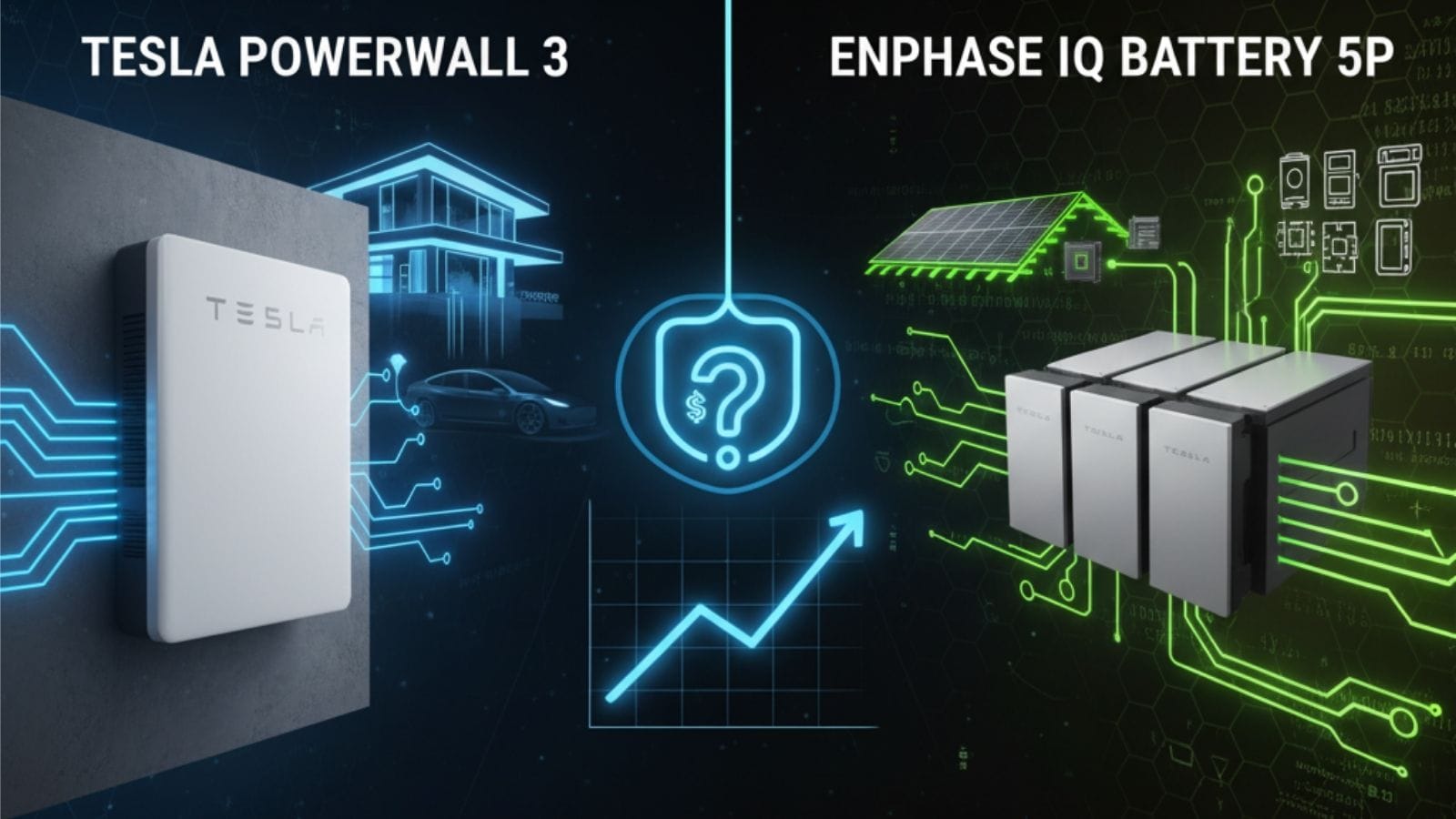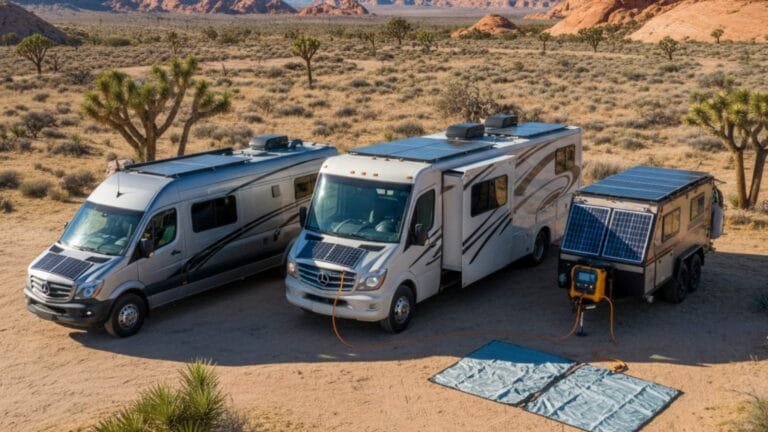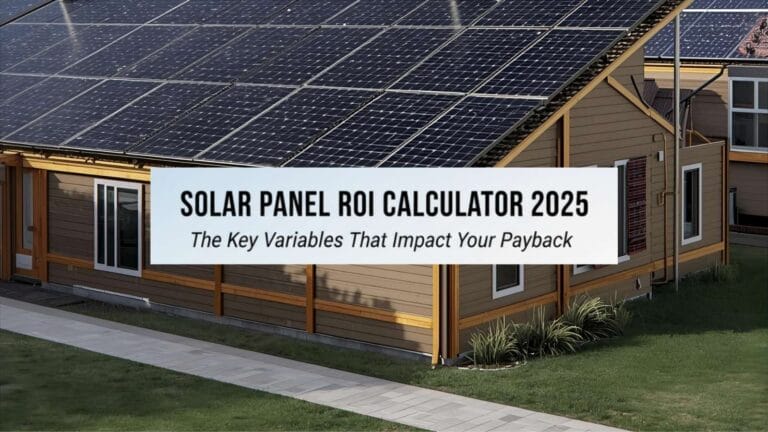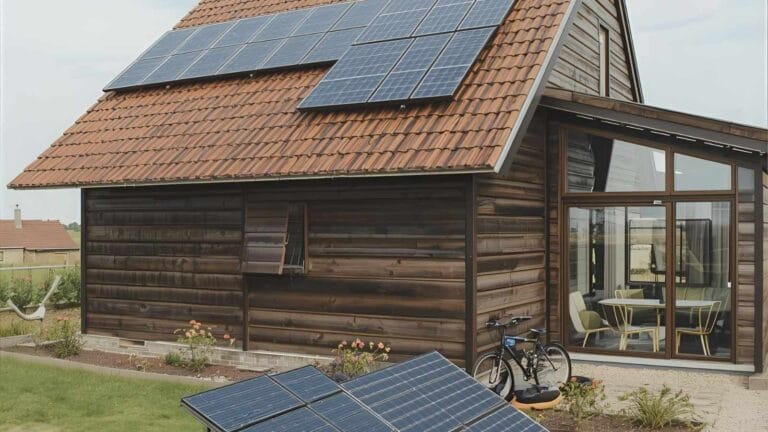Tesla Powerwall 3 vs. Enphase IQ Battery 5P
In the rapidly evolving world of residential energy storage, 2025 is a landmark year. As homeowners seek greater control over their power, resilience against grid instability, and smarter ways to manage energy costs, the solar battery has transformed from a luxury add-on to an essential component of the modern solar ecosystem. At the forefront of this revolution are two industry titans: Tesla and Enphase. The launch of their latest products has set the stage for a compelling showdown: the Tesla Powerwall 3 vs. the Enphase IQ Battery 5P.
Choosing between these two premium options is one of the most significant decisions a homeowner will make when investing in a solar-plus-storage system. Both promise to deliver reliable backup power and optimize your energy usage, but they achieve these goals through fundamentally different technologies and design philosophies. Is the all-in-one powerhouse of the Powerwall 3 the right choice, or does the modular, scalable approach of the IQ Battery 5P better suit your needs?
This comprehensive, head-to-head comparison will provide a clear, data-driven analysis of these two leading solar batteries. We’ll break down their key specifications, compare their real-world performance, analyze their costs, and provide an expert framework to help you determine which of these cutting-edge energy storage solutions is the undisputed right choice for your home.
What Are the Key Differences Between Powerwall 3 and IQ Battery 5P?
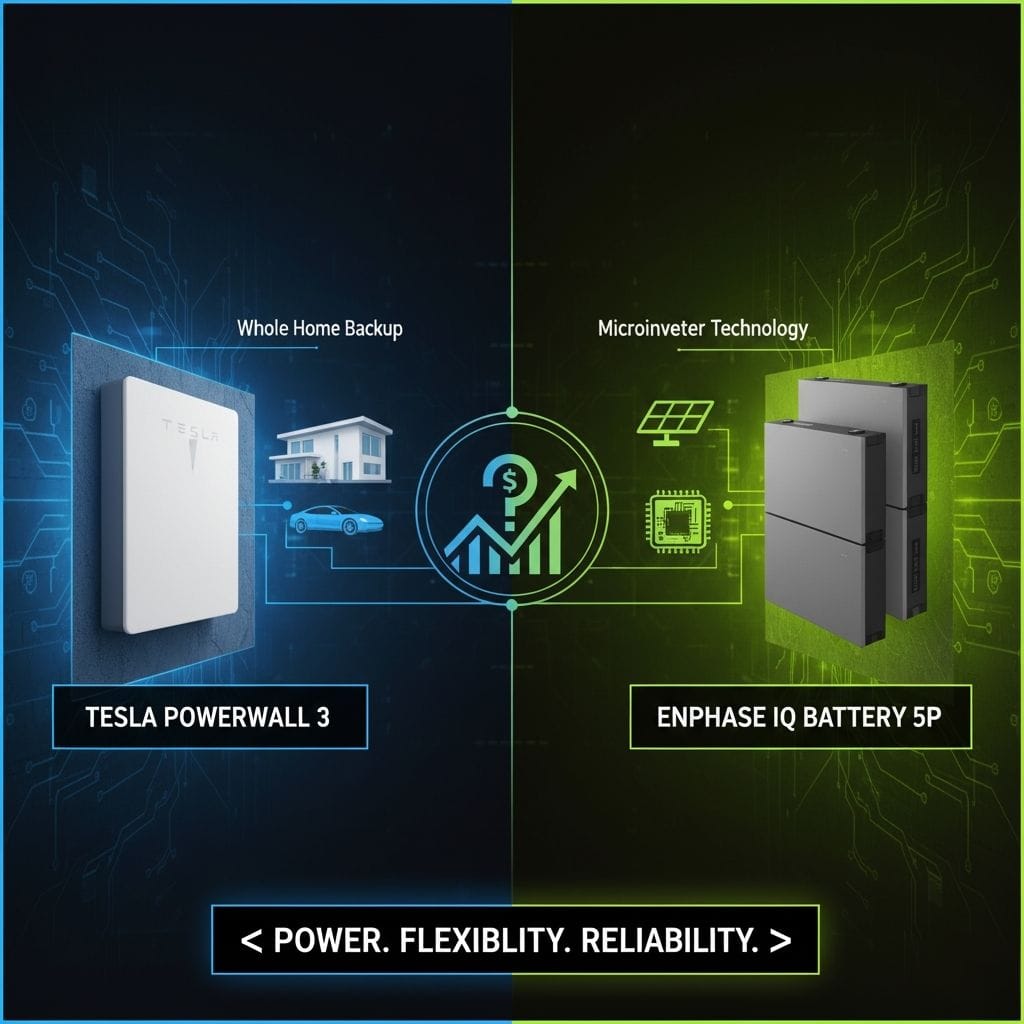
The core difference between the Tesla Powerwall 3 and the Enphase IQ Battery 5P lies in their system architecture and power output. The Powerwall 3 is a high-power, all-in-one DC-coupled system that includes an integrated solar inverter, while the Enphase IQ Battery 5P is a modular, scalable AC-coupled battery designed to integrate seamlessly into the broader Enphase ecosystem of microinverters. This fundamental distinction impacts everything from installation to performance and scalability.
Which battery offers more power and capacity?
When it comes to raw power, the Tesla Powerwall 3 sets a new industry standard for a single unit. It is designed to start and run large appliances with ease, making it a formidable choice for whole-home backup.
- The Tesla Powerwall 3 boasts a continuous power output of 11.5 kW, which is enough to run multiple large loads simultaneously, such as a central air conditioner and a well pump. Its energy capacity is a fixed 13.5 kWh, which is typically sufficient to cover a home’s essential needs overnight.
- The Enphase IQ Battery 5P is a modular unit with a continuous power output of 3.84 kW and a usable capacity of 5.0 kWh. While a single unit is less powerful than a Powerwall 3, its strength lies in its scalability. Homeowners can easily stack multiple units together to increase both power and capacity to meet their specific needs. For example, three IQ Battery 5P units would provide 11.52 kW of power and 15 kWh of capacity, slightly exceeding a single Powerwall 3.
The takeaway: For maximum power from a single box, the Powerwall 3 is the clear winner. For homeowners who want to start smaller and expand their system over time, the modularity of the Enphase IQ Battery 5P is a significant advantage.
What is the difference in their core technology and architecture?
This is the most technical but crucial difference between the two. The choice between a DC-coupled and an AC-coupled system has significant implications for system efficiency and compatibility.
Tesla Powerwall 3: The DC-Coupled Powerhouse
The Powerwall 3 is a DC-coupled system. This means that the DC electricity from your solar panels can flow directly to the battery to be stored, without being converted to AC first. This is highly efficient, as it avoids the energy loss that occurs during DC-to-AC conversion. The Powerwall 3 also features a fully integrated solar inverter, capable of handling up to six strings of solar panels. Think of it as a central command hub for your entire solar and storage system in one sleek package.
Enphase IQ Battery 5P: The AC-Coupled Modular System
The Enphase IQ Battery 5P is an AC-coupled system. This means it is designed to work with the AC electricity that has already been converted by Enphase’s signature microinverters located on the roof under each solar panel. The battery has its own internal inverters that convert this AC power back to DC for storage, and then back to AC again when it’s discharged. While this process involves an extra conversion step (leading to a slightly lower round-trip efficiency), it makes the IQ Battery 5P incredibly flexible and easy to add to any existing home with an Enphase microinverter system.
How do their installation processes and system integration compare?
The installation process for each battery is a direct reflection of its underlying architecture. The Powerwall 3 is a centralized installation, while the Enphase system is distributed.
- The Tesla Powerwall 3 installation is streamlined because it combines the solar inverter and battery into one unit. This can simplify wiring and reduce the amount of wall space needed for equipment. However, it is a proprietary system designed to work best within the Tesla ecosystem.
- The Enphase IQ Battery 5P is designed to be a plug-and-play component of a complete Enphase energy system, which includes IQ8 Microinverters and the IQ System Controller. This deep integration allows for sophisticated energy management. Because each battery is smaller and lighter, installation can be more flexible, allowing for wall-mounting in more locations.
Head-to-Head Specification Showdown: Powerwall 3 vs. IQ Battery 5P
To provide a clear, at-a-glance comparison, this table breaks down the key technical specifications for each battery. Data is compiled from manufacturer datasheets and industry analysis as of October 2025.
| Specification | Tesla Powerwall 3 | Enphase IQ Battery 5P |
|---|---|---|
| Usable Energy Capacity | 13.5 kWh | 5.0 kWh (Scalable) |
| Continuous Power Output | 11.5 kW | 3.84 kW (Scalable) |
| Peak Power Output | 22 kW | 7.68 kW (Scalable) |
| Round-Trip Efficiency | ~97.5% (DC-to-DC) | ~90% (AC-to-AC) |
| System Architecture | DC-Coupled (Integrated Inverter) | AC-Coupled (Modular) |
| Battery Chemistry | Lithium Iron Phosphate (LFP) | Lithium Iron Phosphate (LFP) |
| Warranty | 10 years, unlimited cycles, 70% capacity retention | 15 years or 6,000 cycles, 70% capacity retention |
| Cooling System | Liquid Cooling | Passive (No moving parts) |
How do their warranties and lifespans compare?
Both Tesla and Enphase use the industry-leading Lithium Iron Phosphate (LFP) battery chemistry, which is known for its exceptional safety and long lifespan. However, Enphase has taken the lead by offering a longer and more comprehensive warranty.
- The Tesla Powerwall 3 comes with a solid 10-year warranty with unlimited cycles, guaranteeing at least 70% capacity retention at the end of the term.
- The Enphase IQ Battery 5P comes with an industry-leading 15-year limited warranty or 6,000 cycles, also guaranteeing 70% capacity retention. This extended 5-year coverage provides significant additional peace of mind and long-term value.
This longer warranty from Enphase is a major selling point and reflects their confidence in the durability of their passively cooled, distributed system. The U.S. National Renewable Energy Laboratory (NREL) conducts extensive research on energy storage, highlighting that battery degradation and lifespan are key factors in the overall cost-effectiveness of a system.
What is the expected cost of a Powerwall 3 vs. an IQ Battery 5P?
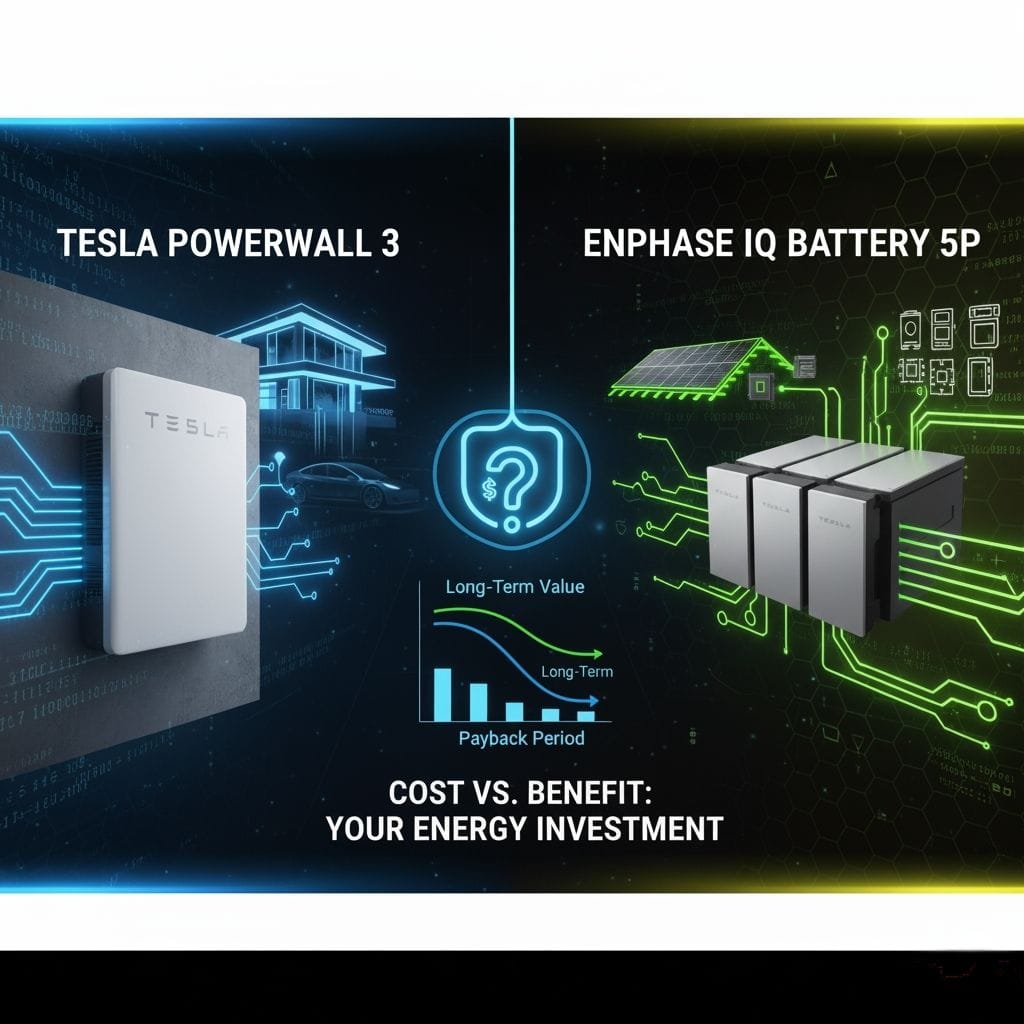
The total installed cost can vary significantly based on your location, installer, and the complexity of your project. However, we can compare the typical equipment and installation costs before incentives, which are a key part of the federal government’s clean energy strategy, as detailed by the official U.S. Department of Energy consumer guide.
- A single Tesla Powerwall 3, including the integrated inverter and supporting hardware, typically has an installed cost ranging from $14,000 to $18,000 (USD).
- To achieve a comparable capacity, a homeowner would need three Enphase IQ Battery 5P units (15 kWh total). The installed cost for this 3-battery setup would typically range from $16,000 to $20,000 (USD).
While the Tesla system often has a lower upfront cost for a similar capacity, the Enphase system’s higher cost is offset by its superior warranty and the flexibility to start with a smaller, less expensive single-battery system (typically $7,000 – $9,000 installed) and expand later.
Which Solar Battery is Right for Your Home?
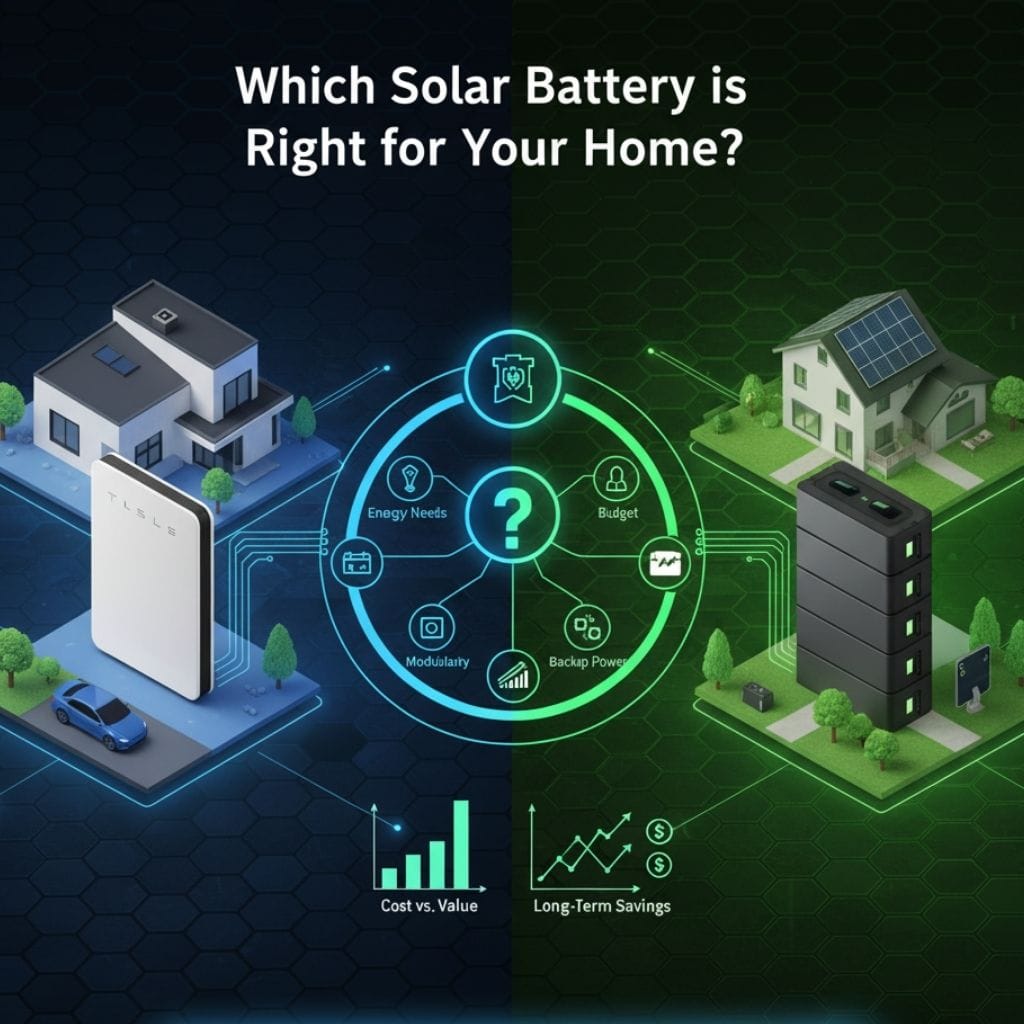
The “best” battery is the one that aligns with your specific energy goals, budget, and existing or planned solar setup. There is no one-size-fits-all answer.
Who should choose the Tesla Powerwall 3?
The Tesla Powerwall 3 is an ideal choice for:
- New Solar Installations: Because it includes a high-quality solar inverter, it’s a perfect, streamlined solution for homeowners who are installing a completely new solar and storage system.
- Homeowners Prioritizing Whole-Home Backup: Its massive 11.5 kW continuous power output is designed to run large appliances and provide a near-seamless whole-home backup experience from a single unit.
- Those Seeking Maximum Efficiency: The DC-coupled architecture offers a slight edge in round-trip efficiency, meaning less wasted energy.
Who should choose the Enphase IQ Battery 5P?
The Enphase IQ Battery 5P is the superior option for:
- Homeowners with Existing Enphase Systems: It is designed for perfect plug-and-play integration with Enphase microinverters, making it the simplest and most logical choice for adding storage to an existing Enphase array.
- Those Who Value Scalability and Flexibility: If you want to start with a smaller battery for essential backup and have the option to easily add more capacity later, the modular design of the 5P is unmatched.
- Anyone Prioritizing a Longer Warranty: The 15-year warranty offers 50% more coverage than the Powerwall 3, providing the best long-term investment protection in the industry.
A Tale of Two Philosophies
The battle between the Tesla Powerwall 3 and the Enphase IQ Battery 5P is not about a winner and a loser; it’s about two different, brilliantly executed philosophies of energy storage. The Powerwall 3 is a testament to the power of integration—a sleek, high-performance, all-in-one unit that excels in new installations. The IQ Battery 5P is a tribute to the power of modularity—a flexible, scalable, and long-lasting component of a distributed energy ecosystem.
Your choice will ultimately depend on your priorities. If you are starting fresh and need a powerful, centralized hub to run your entire home, the Powerwall 3 is a compelling and cost-effective solution. If you value a longer warranty, the flexibility to grow your system over time, or are already part of the Enphase ecosystem, the IQ Battery 5P offers a robust and future-proof path to energy independence. Both are exceptional products that will define the residential energy landscape for years to come.

Solar Energy Enthusiast & Renewable Energy Researcher
Vural’s journey into solar energy began four years ago, driven by frequent power outages and high electricity bills at his own home. He has since gained hands-on experience with both personal and commercial solar projects. At solarpanelresource.com, Vural shares his real-world insights and in-depth research to guide homeowners and business owners on their own path to energy independence.

